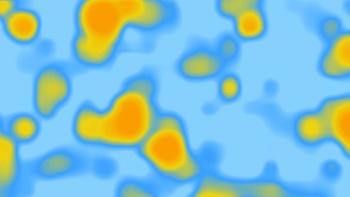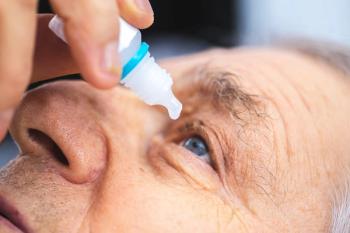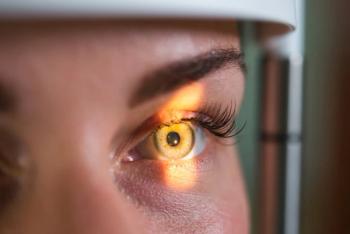
AAOpt 2024: The TFOS Lifestyle Report on elective medications and procedures
Tracy Doll, OD, FAAO, details portions of the Tear Film and Ocular Surface Society Lifestyle Report, which discussed certain risk factors that we may have for development of ocular surface dryness or dry eye.
A Rapid Fire session given by Lisa Hornick, OD, MBA, FAAO; Tracy Doll, OD, FAAO; Leslie O'Dell Hombach, OD, FAAO; and Pam Theriot, OD; at the AAOpt meeting in Indianapolis, Indiana on the key findings from the Tear Film and Ocular Surface Lifestyle Report, with a particular emphasis on four main areas: elective procedures and medications, cosmetics, digital eye strain, and environmental conditions. Doll details the elective medications and procedures portion of the report.
Video transcript:
Editor's note: The below transcript has been lightly edited for clarity.
Tracy Doll, OD, FAAO:
Hi, I'm Dr. Tracy Doll, and I practice just outside of Portland, Oregon, at Sunset Eye Clinic. I love to do all things that are ocular surface and dry eye. This year, I worked with a fantastic team—Pam Theriot, Lisa Hornick, and Leslie O'Dell—and we presented on findings from the TFOS Lifestyle Report, which discussed certain risk factors that we may have for development of ocular surface dryness or dry eye. The topic that I was covering in particular was elective medications and procedures, which might surprise you, because the things that we think are elective may actually be things that are necessary to treat dry eye and other diseases. They include things like eye drops and procedures, over the counters, and prescriptions.
I talked about three main takeaways from the eye drop world, which is that hyaluronic acid is supported by TFOS as an ingredient in artificial tears. We need to stay away from BAK [benzalkonium chloride] as a preservative, and we especially need to watch BAK and 'get the red out' formulations of brimonidine, because they can be frequently overdosed and lead to more problems. So it was a fantastic lecture. We talked about it into my section.
We also talked about how environment, wind, and altitude can affect dry eye. We talked about digital eye strain, what's real and what isn't. And then the final discussion was, of course, cosmetics by Leslie O'Dell, one of the original Dry Eye Divas, and she and I worked together on that subcommittee. So it was a great lecture, great time, and some great practical takeaways.
And for elective procedures, one of the biggest surprises was that things that we consider to be necessary for treating pathologic diseases of ocular surface dryness, those are actually dry eye procedures. They're considered elective, but I don't consider them elective because I think that dry eye is very impactful in the daily lifestyle. But that classification, I just think it's interesting classification. But I think all the things were practical and the things that we think that we know and don't know. I guess one thing that surprised me is that we really don't have good enough research on the realm of hot compresses. We don't really have any standardized, good research in that area to say this is the right way and the best way to do it. So there's an area of research that could be done.
One big thing that actually utilized from the TFOS just this last summer was with allergies. The report actually detailed that it may be more beneficial to use corticosteroid nasal sprays and topical preparations instead of the oral antihistamines that we all tend to grab for, because oral antihistamines can actually reduce tear production by limiting lacrimal gland blood flow. This last allergy season, I actually started telling patients to grab for the nasal sprays and the topical eye drops instead of putting them on orals.
Some key takeaways that were given from my section, in addition to the great use of hyaluronic acid and artificial tear, we want to stay away from BAK preparations, particularly when we're using brimonidine, which is the best get the red out drop but we want to make sure we're careful in dosing that because it is often preserved with BAK. Antihistamines, if you're thinking about prescribing those for patients, topical nasal cortical steroids.
And then they also want to draw our attention to the surgical realm, where we want to be very careful with any procedures that cut the trigeminal nerve or affect the corneal nerves. And so they're really, once again, recommending ocular surface optimization, getting our cataract and our LASIK patients to not have dry eye before we refer them for those procedures.
Newsletter
Want more insights like this? Subscribe to Optometry Times and get clinical pearls and practice tips delivered straight to your inbox.








































